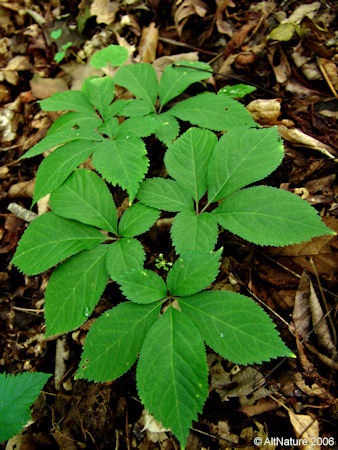
Panax Quinquefolium
Other Names: American Ginseng, Panax Ginseng, San, Redberry, five fingers, man root, divine root, Root of life
Ginseng root is considered to be an adaptogen, cardio-tonic, demulcent, panacea, sedative, sialagogue, stimulant, tonic and stomachic herbal tonic.
Ginseng Herb Uses
The following information is based on historical uses found in herbal lore and unscientific claims. There is insufficient research on this herb to prove benefits or safety issues it may have in humans. This article is currently being updated, and may have inaccuracies.
Ginseng herb has a long history of use as an alternative medicine going back over 5,000 years, and appears on several continents (origin unknown). It is and was used extensively in Native American medicine. Its remarkable ability to help the body adapt to mental and emotional stress, fatigue, heat, cold, and even hunger is confirmed and documented!
Click here for Ginseng Growing and Harvesting Information
Ginseng berry extract shows promise for diabetes, obesity
The major
constituents in Ginseng are Triterpenoid saponins,
Ginsenosides (at least 29 have been identified), Acetylenic
compounds, Panaxans, and Sesquiterpenes. Taken over an
extended period it is used to increase mental and physical
performance, Ginseng is said to be therapeutic for the whole
body. A very powerful herb, it both stimulates
and relaxes the nervous system, encourages the secretion of
hormones, improves stamina, lowers blood sugar and
cholesterol levels and increases resistance to disease. The
ginsenosides that produce these effects are very similar to
the body's own natural stress hormones. Ginseng is used in the
treatment of debility associated with old age or illness,
lack of appetite, insomnia, stress, shock and chronic
illness. Ginseng also increases immune function, resistance
to infection, and supports liver function. The leaf is
emetic and expectorant. The root is candied. Ginseng stimulates and
increases endocrine activity in the body. Promotes a mild
increase in metabolic activity and relaxes heart and artery
movements. Stimulates the medulla centers and relaxes the
central nervous system.
CAUTION: Don’t take Ginseng
and Ginseng mixtures with Coffee as it will accelerate the
caffeine effects on the body and can cause diarrhea.
Ginseng is said to be highly good for the metabolism, and promotes general well being. It has a reputation as an aphrodisiac, but this seems to be totally based on the fact that it relaxes the overly tense person a bit. If you suffer from back pain or TMJ adding this to a tea of Catnip and slippery elm may help. It is also presumably usable as an ingredient in a Meade or magewine.
Dosage : This seems to vary, some say 1000 mg. a day, others more or less! I just break off a small piece of the dried root (aspirin size) and swallow it with the daily vitamin.
Ginseng Native Habitat
Ginseng is a perennial herb, native to Eastern N. America found from Maine to Georgia, west to Oklahoma and Minnesota. It grows in rich soils in cool woods.
How to grow Ginseng
Ginseng requires a deep moist humus rich soil in a shady position in a woodland, growing well on north-facing slopes and in deep cool woodland areas. Ginseng seeds should be sown in a shady position in a cold frame or greenhouse, and spend least their first winter there. Plant into their permanent positions in late summer or early spring. It has a large, thick, fleshy, whitish, root, growing 3 to 4 inches in length, specimens have been found twice this size. Most roots are spindle shaped with smaller appendages. The stem is simple and erect, on average about 1 to 2 foot high, bearing three to five large, palmate, leaves in a whorl atop the stem, each leaf is long stalked, divided into five finely-toothed, short petiole, leaflets, and a single, terminal umbel, with a few small, yellowish or light green flowers which grow on a short stalk from the center of the whorl of leaves. The fruit is a cluster of bright red berries. Flowers bloom in June and July. Gather the roots in Fall after the berries or seeds have fallen away. Dry for later herb use. The wild supply is quickly being diminished due to over harvesting for export to china and other countries, in some areas it is illegal to harvest during certain months of the year.

Ginseng Folklore and History
The roots are called Jin-chen by the natives of China, meaning ’like a man,’ in reference to their looking like the human form. The American Indian name for the plant, garantoquen, has (strangely) the same meaning and uses, seeing how each race had no knowledge of the existence of the other. The American Indians attributed much magic power to Ginseng. The Seminole Indians using it as a Love Medicine, rubbed it on the body and clothes to bring back a divorced wife.
Article by Deb Jackson & Karen Bergeron Copyright 2000- 2017



